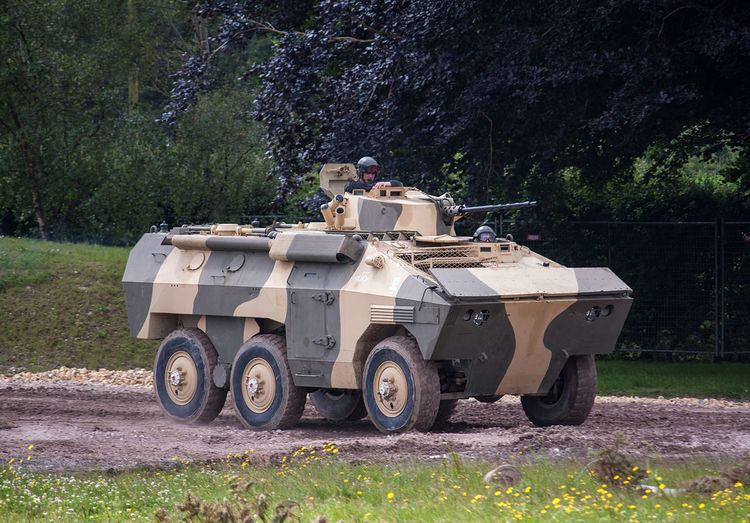The EE-11 Urutu is a combat proven 6x6 armored personnel carrier developed by Engesa of Brazil. It shares many components with the EE-9 Cascavel armoured fighting vehicle. The suspension includes Engesa's Boomerang double-axle rear drive. The Brazilian Marine Corps uses a modified amphibious variant with propellers and a more powerful engine.
EE-11 Urutu has seen combat in Iraq and Libya.
It was used by the Brazilian Army in the United Nations Stabilization Mission in Haiti.
Urutu production stopped in 1987; since then, all units still in use by the Brazilian Army have been modernized and upgraded by the Army's São Paulo War Arsenal branch as a stopgap until the arrival of the newly designed VBTP-MR in 2012.
The new engine used in the upgrade of Urutu generates 230 hp, an improvement over the 158 hp of the old version.
The prototype reached a top speed of 110 km/h on good terrain and proved capable of reaching 80 km/h on off-road conditions.The range is 950 kilometers. Before the upgrade, it was 750 kilometers.The EE-11 is used to transport troops, on land as well over bodies of water, due to its amphibious capability. These qualities justified their acquisitions and were largely accepted by the armed forces of several Latin American countries.
Because of these proven qualities, the Brazilian Army has chosen to take 226 Urutus and more than 600 Cascavels out of storage. With the older engines being quite outdated, some with manual gearbox while others are with automatic transmission, a gap in the technology exists and so has led to a major overhaul being made. The upgraded military vehicles will operate for at least another 15 years.
Colombian civil war (1964–present) (Colombia)Chadian–Libyan conflict (Libya)Iran–Iraq War (Iraq)Invasion of Kuwait (Iraq)Persian Gulf War (Iraq)United Nations Stabilization Mission in Haiti (Brazil-UN)2011 Libyan civil war (Pro-Gaddafi forces and Anti-Gaddafi forces)Iraq Civil War (2014–present)Mortar Carrier: Carries an M936 81mm AGR or 120 mm mortar, for motorised fire support. Transports the mortar crew (four).Infantry Fighting Vehicle: With a turret for 25 mm cannon and an anti-tank missile launcher tube.Fire support: Equipped with a large turret ring to accommodate the complete Cockerill Mk.III 90 mm cannon and EC-90 turret of the EE-9 Cascavel. Twelve of this variant were built for Tunisia.Anti-aircraft: Version equipped with a turret for a 20 mm or 25 mm cannon.Recovery Vehicle: Usually unarmed version, includes a hydraulic crane and equipment maintenance and wrecking of vehicles on the battlefield.Anti-riot: Version equipped with an anti-plank fence and smoke launchers.Ambulance: Equipped with four stretchers and medical equipment to provide emergency medical care.Command Vehicle: Designed as Command-Vehicle of large units and sub-operating units. Allows the monitoring of the battlefield by the operational commanders. It takes in two tables attached latrine and places for files, documents and maps, and communications equipment. Angola Bolivia: 24 Brazil: 226 Chile: 37 Colombia: 76 Cyprus: 10 Dubai: 60 Ecuador: 18 Gabon: 12 Guyana Iraq: 200 Jordan: 28 Libya: 180 Nigeria Paraguay: 12 Suriname: 15 Tunisia: 18 Uruguay: 18 Venezuela: 38 Zimbabwe: 7
